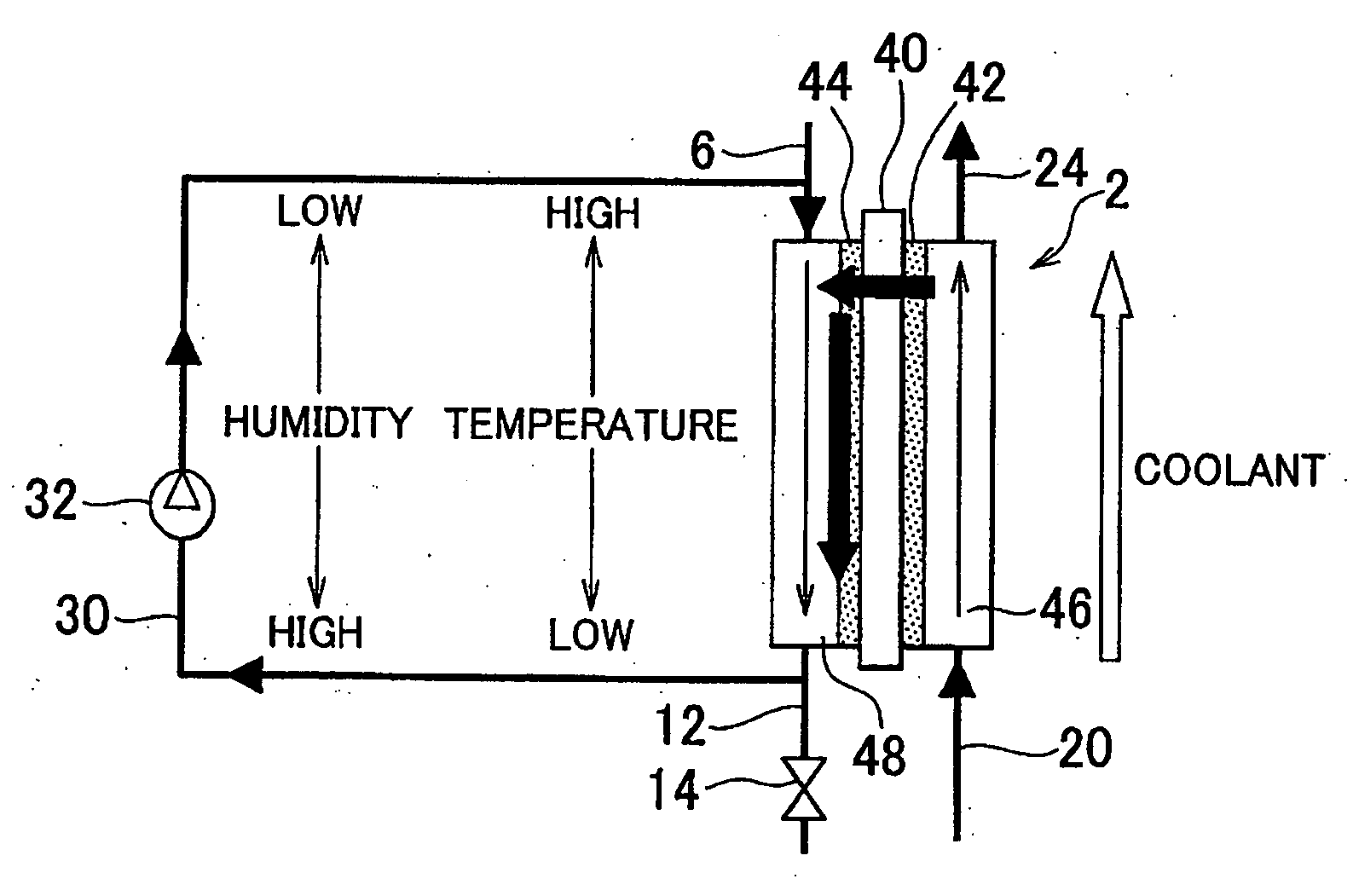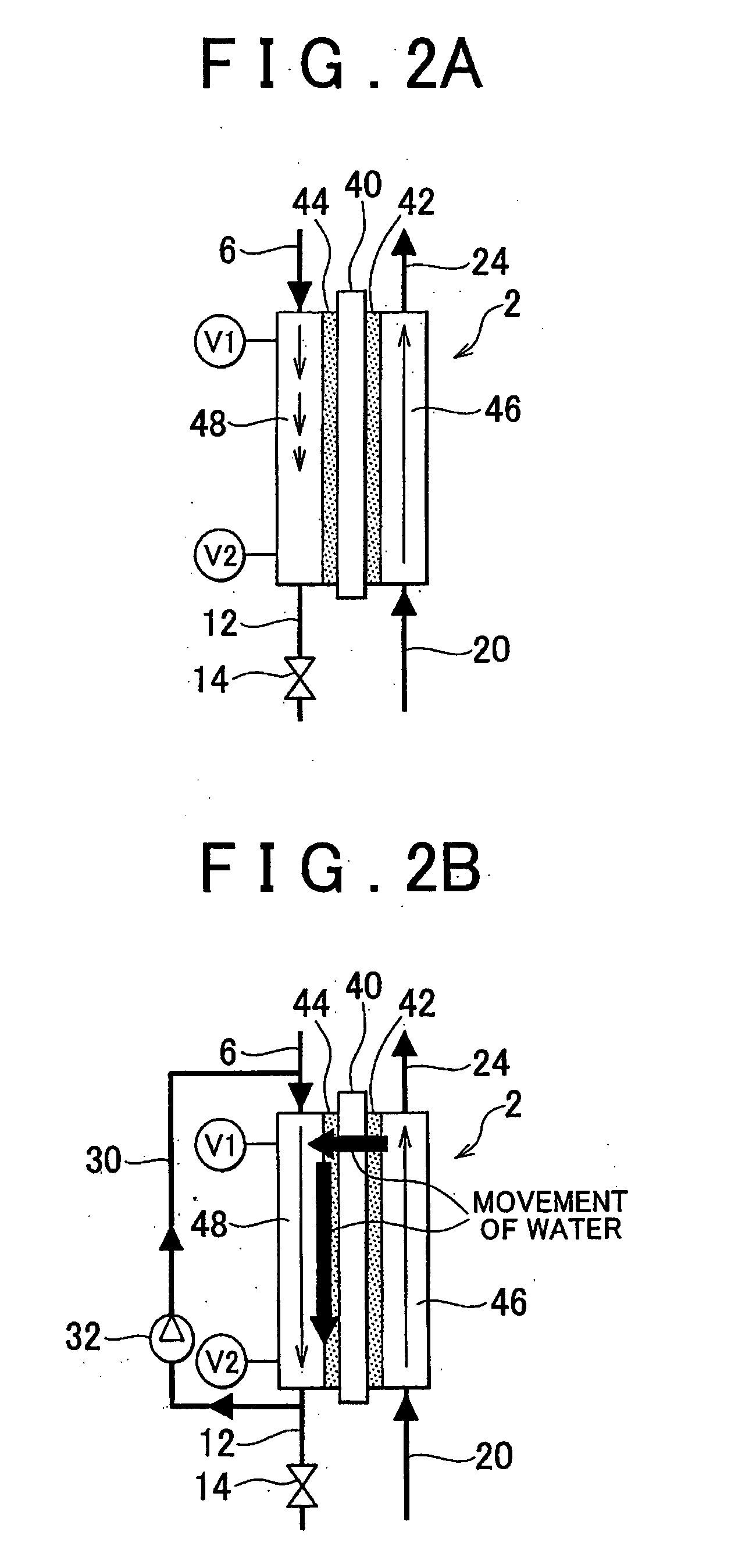Fuel cell system and method for controlling the fuel cell system
- Summary
- Abstract
- Description
- Claims
- Application Information
AI Technical Summary
Benefits of technology
Problems solved by technology
Method used
Image
Examples
Embodiment Construction
[0050]FIG. 1 is a schematic view of the configuration of a fuel cell system according to a first embodiment of the invention. The fuel cell system generates electric power using a fuel cell unit 2 and supplies the generated electric power to various electric loads, including a motor. The fuel cell unit 2 is a fuel cell stack constituted of a plurality of fuel cells stacked on top of each other. Each fuel cell is constituted of a membrane-electrode assembly and a pair of collector plates that sandwich the membrane-electrode assembly (not shown). The membrane-electrode assembly is constituted of a solid polymer electrolyte membrane, catalytic electrodes integrally provided on the both sides of the solid polymer electrolyte membrane, and gas diffusion layers formed of carbon sheets, etc., and integrally provided on the both sides of the solid polymer electrolyte membrane. Each collector plates serves also as a separator to partition the adjacent membrane-electrode assemblies. Hydrogen ...
PUM
 Login to View More
Login to View More Abstract
Description
Claims
Application Information
 Login to View More
Login to View More - R&D
- Intellectual Property
- Life Sciences
- Materials
- Tech Scout
- Unparalleled Data Quality
- Higher Quality Content
- 60% Fewer Hallucinations
Browse by: Latest US Patents, China's latest patents, Technical Efficacy Thesaurus, Application Domain, Technology Topic, Popular Technical Reports.
© 2025 PatSnap. All rights reserved.Legal|Privacy policy|Modern Slavery Act Transparency Statement|Sitemap|About US| Contact US: help@patsnap.com



